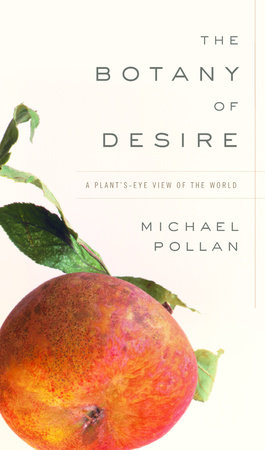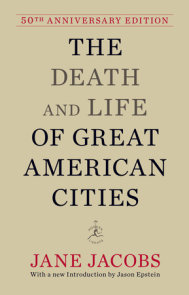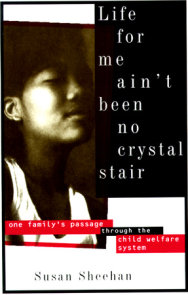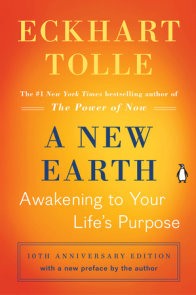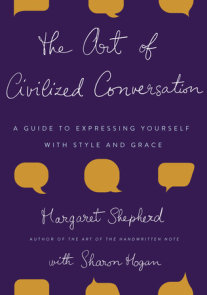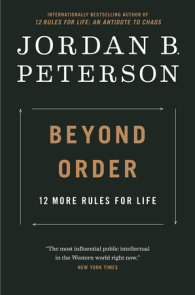TEACHING GUIDE
NOTE TO TEACHERS
Also Available: For The Botany of Desire PBS television documentary Guide, please download the PDF attachment at the bottom of this page.
The Botany of Desire examines our species’ role in nature and challenges the idea that people are the sole drivers of domestication. Pollan looks closely at our relationship with the apple, the tulip, marijuana, and the potato, and shows how each plant has evolved to gratify human desires and thus has enticed us to help them multiply. Just who, he asks, is domesticating whom? By chronicling the evolutionary advantages enjoyed by plants that develop qualities favored by people, Pollan leads the reader to consider how we stand in relation to our fellow species.
TEACHING IDEAS
This piece of creative non-fiction lends itself well to a wide diversity of subjects. While its content is most specifically about ecology and the natural sciences, Pollan’s ability to argue an original, complicated idea in a convincing way makes it a perfect text for writing or journalism students. Philosophy students will find a springboard for examining our species’s place in the natural world.
DISCUSSION AND WRITING
I. Introduction:
The idea for this book began in Pollan’s garden. One day while he planted potatoes and bees collected nectar from nearby apple blossoms, he thought, “What existential difference is there between the human being’s role in this (or any) garden and the bumblebee’s?”
We humans divide the world into subjects and objects, and in the garden, as in nature generally, we cast ourselves as the subjects. We believe that gardeners, like bees, act in their own interest when they disseminate the genes of other species.But Pollan wondered whether this view could be all wrong.
On the most basic genetic level, every being cares only about making more copies of itself. Some plant species have found that the best way to do that is to play to animals’ desires and thus induce them to spread their genes. The bee may think she is plundering the flower, but it has cleverly manipulated her into hauling its pollen from blossom to blossom. Considering things from this perspective, Pollan suddenly saw the potato not as man’s pawn but his coevolutionary partner. The garden seemed less innocent, less passive, as Pollan realized his plants were getting him to do things for them they couldn’t do themselves.
Domestication seems like something we have done to other species, but it makes just as much sense to see it as something certain plants have done to us, a clever evolutionary strategy for advancing their own interests. True, we have spent the last few thousand years remaking potatoes and many other species through artificial selection. At the same time, these plants have been remaking us.
Plants’ immobility led them to become great chemists. They cannot run away from creatures that prey on them nor locomote to new territory. Instead they have devised recipes for substances that attract or repel other species and developed put-the-animals-to-work strategies. We think of the invention of agriculture as something we did to plants. It makes just as much sense to think of it as something wheat and corn did to us as a way to conquer the forests.
We humans can’t seem to shake the false premise that we somehow stand outside, or apart from, nature. This book aims to put us back in the great reciprocal web that is life on Earth. Seeing plants as willing partners in an intimate and reciprocal relationship with us means looking at ourselves differently, too: as objects of others species’ designs and desires, as one of the newer bees in the garden.
Questions
1. What is co-evolution?
2. What is artificial selection?
3. How is the human’s role in the garden like or unlike the bee’s?
4. What does Pollan mean when he says: “in a co-evolutionary relationship every subject is also an object, every object a subject?” (xxi)
5. See page xxv. Do you think we stand apart from nature? How or how not?
II. The APPLE
In search of how humans and the apple have benefited one another, Pollan sets out to find the historical figure of John Chapman behind the Disney-fied folk hero of Johnny Appleseed. He finds that both legend and fruit have been artificially sweetened beyond recognition.
A botanical fact about apple reproduction debunks the popular saintly Appleseed myth: apple trees planted from seed (rather than graft) typically bear fruit good for just one thing–hard cider. The identification of apples with health and wholesomeness is the result of an apple-industry PR campaign launched in response to prohibition. Johnny Appleseed helped bring alcohol production to the frontier.
Apples, like people, reproduce sexually, so the offspring bears only little resemblance to its parents. Without grafting, every apple tree in the world would be its own variety, and that variety would go extinct upon the death of the tree. True domestication of apples began when the Chinese discovered grafting (inserting a cutting from one tree into the trunk of another, so the cut piece lives on and bears the same fruit as the tree from which it was taken). This technique allowed the people to select and propagate individual varieties.
Pollan explores the history of sweetness’s role in society: once noble, now cheap and artificial. He examines sweetness as a biological desire, and explains that fruiting plants exploit the mammalian sweet tooth by encapsulating their mature seeds in the sugary flesh of fruit, so that we animals provide transportation to the seeds. We and the plants have evolved to use one another.
Pollan meets Chapman authority William Ellery Jones, and the two retrace Chapman’s footsteps together. Jones clings to the “Saint Appleseed” version, calling him a proto-environmentalist, philanthropist, and friend to children and animals, someone bringing not hard cider, but vitamin C, to the frontier. Pollan, weary of this myth, has come to see Chapman as a wild, paradoxical figure who drew no divide between the natural world and the divine, who transformed the everyday landscape into the mystical and ecstatic. Pollan likens Chapman to Dionysus, the god who taught the Greeks to make wine and the polar opposite of Apollo, god of clear boundaries, order, and man’s control over nature. Pollan will refer to these two figures, and the contrasting human-nature relationships they signify, throughout the book.
Pollan visits the world’s largest collection of apple trees, which boasts over 2,500 varieties. This once-biodiverse crop, of which literally thousands of varieties were available a century ago, has undergone a brutal winnowing, leading to mass extinction of all but a handful of commercially popular varieties, chosen for just two qualities: beauty (big shiny redness) and sweetness (competing in a sugar “arms race against junk food”).
Growing huge tracts of identical trees puts this food at a disadvantage. Wild plants and pests are always co-evolving, but coevolution stops in an orchard of grafted trees; insects and diseases evolve to overcome the plant, which becomes increasingly vulnerable every year. Modern agriculture “solves” this by treating apples with more pesticides than any other food crop. Another solution would be to introduce genes from the apple’s wild ancestors in the hills of Kazakhstan, which are quickly being lost to real estate development. Paradoxically, the viability of domestication is dependent upon the preservation of wildness.
Questions
1. Explain Pollan’s assertion that both Chapman and the apple “have been sweetened beyond recognition. Figures of tart wildness, both have been thoroughly domesticated…in both cases a cheap, fake sweetness has been substituted for the real thing.” (7) Who/what else have we done this to? Why?
2. What does it mean that apples don’t “come true” from seeds? (9) What is grafting, and when was it first practiced? (12) Explain why “if not for grafting, every apple in the world would be its own distinct variety.” (10) How many new apple varieties could come from each tree (11)? What would have happened if Americans only planted grafted trees? (42) What plants come true from seed? Do animals? Do people?
3. How did early Americans consume apples? When and why did that change? How were notions of the apple’s healthfulness popularized? (9, 22)
4. Why do apple seeds contain cyanide? (10) What role does sweetness play in co-evolution? (19) How does this support the book’s thesis?
5. Pollan says the apple “had to forsake its former domestic life and return to the wild before it could be reborn…as distinct from the old European stock as the Americans themselves” (13). Explain.
6. Describe Chapman’s business plan. (15, 26)
7. Describe Pollan’s son’s first experience of sugar. (18)
8. How has the word “sweet” been used over history? Do you think of sweetness as a noble quality? What does Pollan suggest brought about this shift? (17-18)
9. Explain Pollan’s statement that Chapman “was the American Dionysus.” (36) Describe the 1871 etching of Chapman. Why does Pollan say it “seemed just about right”? (36)
10. What was “The Great Apple Rush?” (45)
11. What apple qualities were “completely lost on [Pollan] but had meant the world to people once?” (46) How have the “descendants of Appleseed’s apple seeds… been all but killed off by the dominance of a few commercially important apples?” (50) Define winnowing. How does Pollan use that word? Explain Pollan’s comment that apple breeders are “locked in a kind of sweetness arms race with junk food.” (51) How many apple varieties were commercially available a century ago? (51) How many varieties have you tasted in your lifetime?
12. Explain Forsline’s statement that “the practice of growing a dwindling handful of cloned varieties in vast orchards has rendered [the apple] less fit as a plant.” (52) How does coevolution cease in grafted trees? What do apple growers do about this? What solution does Forsline propose? (52-53)
Writing
13. How has our society’s experience of food changed? What role has our control of the natural world played in that change?
14. Explain Pollan’s statement that “Everyone knows that the settlement of the West depended on the rifle and the ax, yet the seed was no less instrumental in guaranteeing Europeans’ success in the New World.” (42)
15. Would you argue that modern eating’s richness has become greater?
16. Pollan says we can imagine life without apples but not without sweetness. (16) Try.
III. The TULIP
As a child, Pollan thought flowers’ beauty insufficient to justify the effort of planting them. He contrasts this boyhood logic with the seemingly unreasonable attraction that draws people (and other animals) to blossoms. This attraction reached a fever pitch when people responded to the tulip with a brief, collective madness, now called tulipomania, that shook seventeenth-century Holland. Pollan tells the story and examines how plants leverage animal response to flowers to propagate themselves. He asks, “Does beauty have a purpose?” and answers with a resounding Darwinian yes.
Like bees, humans are instinctually drawn to flowers. Flowers indicate where fruit will soon be (a plant’s fruit ripens after its flowers bloom) so animals that notice flowers have a better chance of getting to the fruit first. But the animals aren’t the only ones getting something out of the deal. As we learned in the first chapter, plants benefit when animals eat their fruits, because the fruits contain seeds which are spread when passed from the animal’s gut. Similarly, plants have recruited insects to pollinate them.
Natural selection designed flowers to communicate with insects, birds, and even mammals like us. Insects follow the visual cues of flowering plants, and unwittingly pollinate them along the way. A spectator might think bees are satisfying themselves, but further examination reveals that the flowers are using the insects to meet their own pollination needs. Pollan says this is true of human action too; his own backyard is crowded with species that have evolved to catch the human eye. In some, humankind has replaced bees as the most important species to ensure a flower’s evolutionary success. There are more roses, peonies, and tulips today than there were before people took an interest in them. For these flowers the path to world domination passed through humanity’s ideals of beauty.
Insects pollinated and thus selected tulips for millions of years before people began to cast votes for our favorites. Darwin called the latter process artificial, but from the flower’s perspective, it’s a distinction without a difference: traits desired by bees or Turks were rewarded with more offspring. Though we self-importantly regard domestication as something people have done to plants, Pollan suggests it is also a strategy by which the plants have exploited us to advance their own interests. Often, traits preferred by people rendered plants less fit for the wild. In fact a mutation that nature would have rejected proved to be brilliant in an environment shaped by humans.
One crucial element that drove tulipomania has been lost to us: Dutch tulips were prone to spontaneous eruptions of color, called “breaks.” Broken tulips cost a fantastic price. (Semper Augustus was the most famous such break. At the peak of the frenzy, a Semper Augustus sold for a sum that would have bought one of the grandest houses in Amsterdam.) What the Dutch did not know was that a virus was responsible for the break. It weakened the bulbs it infected, making broken tulips even scarcer, and thus driving up their price.
By 1635, the trade of actual bulbs gave way to the trade in promissory notes, paper descriptions of future flowers. Frenzied speculators invested life savings in slips of paper representing future flowers. In a phenomenon called “the greater fool theory,” it becomes logical to pay an absurd price for something as long as there is someone else willing to pay more. Inevitably, the bubble burst. At an auction in 1637 there were suddenly no buyers. The Dutch blamed the flower’s seductive beauty for their ruin.
The Greeks believed beauty was the offspring of the opposing tendencies of Apollo and Dionysus. But Pollan traces the evolution of flowers to a time before Greeks gods. During the Cretaceous period, flowers and fruit appeared, and enlisted animals in a grand coevolutionary contract: nutrition in exchange for transportation. Beauty had emerged as a survival strategy. Plants with bigger, brighter, more fragrant blossoms thrived. Without flowers, says Pollan, reptiles would still rule a leafy, fruitless world.
Questions
1. What was tulipomania?
2. What did the young Pollan think of flowers? What qualities did he value in plants?
3. What do psychiatrists think of patients who are indifferent toward flowers? How long have people valued flowers as beautiful? Why did Jews and early Christians discourage devotion to flowers? (66) Where are flowers not loved? What might explain this? (67)
4. What do evolutionary psychologists hypothesize about why people distinguish and remember flowers? (68) What role does competition play in this?
5. Give some examples of the visual, olfactory, and tactile devices that flowers employ to get the attention of animals. (69)
6. Why would flowers, even those that posses both male and female organs, go to great lengths to avoid pollinating themselves? (71) How does this relate to our social taboos against incest?
7. What does Pollan mean when he says the pea’s desire, not the bee’s, is gratified when a bee takes pollen from a pea blossom? (72) Explain how flowers choose their mates on the basis of health, using bees as their proxies. (75) Explain Turner’s line, “The colors and shapes of the flowers are a precise record of what bees find attractive.” (76)
8. What is “beauty by design?” (75) What are the two main principles of beauty Pollan describes? (75-77) Why is symmetry significant?
9. What flowers does Pollan identify as our canonical flowers? (78) How has their “multifariousness” set them apart? Explain the statement, “For a flower the path to world domination passes through humanity’s ever-shifting ideals of beauty.” (79)
10. What does Pollan mean when he calls tulips mortal? (79)
11. How did evolutionary pressure on the tulip’s change in the 1600s? Explain Pollan’s statement, “from the flower’s point of view, this is a distinction without a difference.” (81)
12. What does Pollan mean when he says “mutations that nature would have rejected out of hand in the wild sometimes prove to be brilliant adaptations in an environment shaped by human desire?” (81) What other examples of this can you think of? In what ways does culture select traits within people?
13. What tulip qualities did Ottoman Turks find beautiful? How do we know? (81)
14. Describe Sultan Ahmed III’s annual tulip festivals. (82) What was their impact on his rule? Can you think of any modern equivalents?
15. What role did tulips play in Leiden before Clusius’s arrival? How did he change that? (83)
16. How does Pollan describe and explain the role of shame in tulipomania? (84)
17. How did/does desire for conspicuous display influence what people grew in their gardens? What does extravagant uselessness communicate? (86) How is it like or different from the Chinese tradition of bound feet? What other examples can you compare it to?
18. What utilitarian purposes did Europeans suggest for tulips? (86)
19. What is a “broken” tulip? (88) How did the Dutch attempt to encourage breaks? What was the real cause? (89) How were broken tulips treated in the 1920s? (89)
20. How does the virus “throw a wrench” in the book’s thesis? How does Pollan use the virus’s vantage point to defend his thesis? (90)
21. How does Pollan explain the significance of the black tulip? (93)
22. How might have a gray Calvinist backdrop encouraged a desire for beauty? (94)
23. Explain the statement, “After a certain point, the flowers themselves became irrelevant.” (94) What changed in the autumn of 1635? (101) What modern examples of radical overvaluing can you compare to tulipomania? Describe the burst of the tulipomania bubble (104).
24. What was the Sempter Augustus? Describe its appearance and its story. (94-95)
25. Explain Pollan’s statements “the tulip is that rare figure of Apollonian beauty in a horticultural pantheon mainly presided over by Dionysus, ” (97) and “color breaks…can perhaps best be understood as an explosive outbreak of the Dionysian in the too-strict Apollonian world of the tulip–and the Dutch bourgeoisie.” (101)
26. How was tulipomania like a carnival? (101)
27. What is “the greater fool theory” (103)? Where do you see it today?
28. How might the Dutch have used financial abandon to atone for shame of their wealth? (103) In what ways do people do this today?
29. What does Pollan mean when he says beauty did not exist before flowers? (107) When did flowers first appear? What is the “grand coevolutionary compact” between plants and animals? (108) How did beauty become a “survival strategy”? (108)
30. Explain Pollan’s statement “without flowers, we would not be.” (109)
Writing
31. Explain Pollan’s statement that there is probably a correlation between beauty and health. (74)
32. Explain Pollan’s statement, “the transformation of the tulip from a jewel-box flower to a commodity has made the tulip oddly hard to see.” (91) What else “skate[s] past our regard?” (92)
33. Holland’s tulip collection “became a point of national pride in the seventeenth century…mentioned in the same breath as its invincible navy and unparalleled republican liberties.” (84) Can you think of any modern equivalents? How is the tulip accepted as a dowry (85) like or different from gemstones or art? What role did supply and demand play in this preciousness?
IV. MARIJUANA
Some plants nourish, some kill, and others manufacture molecules with the power to change the subjective experience of reality we call consciousness. The same evolutionary watershed that ushered in floral attraction also brought in darker chemical warfare: in self-defense, some plants developed compounds designed to act on the brains of animals, including nicotine, which paralyzes pests that ingest it, or caffeine, which unhinges nervous systems and kills appetite.
For most of history, gardens showcased the power, rather than beauty, of plants. Medieval apothecary gardens focused on plants that healed, intoxicated, or even poisoned. Modern industrial civilization concluded (prematurely) that nature’s patents were no match for its own, so gardens became benign while horticultural dangers–and temptations–were expelled. But Pollan grew a few marijuana plants in his garden one summer in the early eighties. At the time, marijuana seemed harmless and almost accepted (though not quite, and the unexpected arrival of an off-duty cop made Pollan nervous).
Until the government cracked down on its import, most American-smoked marijuana was grown in Mexico, so Americans who planted the seeds spouted plants poorly adapted for northern survival. But growers found a strain, indica, that flourished farther north. They hybridized it with the smoother sativa, reunifying two evolutionary lines that had diverged thousands of years before, and bringing about a revolution in cannabis genetics. Reagan’s drug war pushed growers indoors, where they perfected the hybrid under artificial lights.
The desire to alter consciousness seems universal, and plants possessing this power become sacraments, garnering humankind’s worshipful care and dissemination. In the same way that human desire for sweetness and beauty introduced a new survival strategy for plants that could gratify it, so human hunger for transcendence created new opportunities for plants that made these molecules.
In the ’60s a neuroscientist identified THC, the chemical compound responsible for the psychoactive effects of marijuana. In ’88 a researcher discovered the brain’s receptor for THC. Scientists explained the receptors by theorizing that the brain must manufacture its own THC-like chemical. In ’92 they found it: anandamide, the brain’s own cannabinoid. Its effects include pain relief, short-term memory loss, sedation, and mild cognitive impairment–perfect for helping people endure toil or childbirth.
Botanists theorize about why a plant would hold the precise key to unlock the neurological mechanism governing consciousness. Perhaps attracting human attention was the objective. After all, the plants that give humans the most pleasure produce the most offspring. What may have started as a biochemical accident became the plant’s coevolutionary destiny under domestication. In fact cannabis was one of the first plants to be domesticated (though probably for fiber first).
Pollan seeks to define just how marijuana alters consciousness. Scientists describe being high as “cognitive dysfunction,” specifically loss of short-term memory. But why would the brain manufacture a compound with the same effect? Forgetting, Pollan learns, is one of the most important things healthy brains do, allowing us to filter the information ceaselessly washing over us. By forgetting everything but the present moment, the high mind experiences an intensification of the senses, a virginal noticing of the sensate world. Cannabanoids disable our moment-by-moment memory, allowing us to sense things as though for the first time, and revel in the wonderment.
It may enable people to taste vanilla ice cream with childlike innocence, but marijuana remains a taboo with a reputation for inducing both violence and indolence, and, by severing links between actions and consequences, for unleashing inhibitions and endangering civilization. The marijuana plant is at odds with our loftier notions of self and society. We want to believe our minds stand apart from nature, not that transcendence is tripped by molecules that flow through our brains or grow in plants, nor that some of the brightest ideas of human culture are born of drug use.
1. How do plants encourage animals to seek or avoid them, such as bitter-tasting compounds, or an abundance of sugar? Why is it more advantageous for a plant’s poison to repel than to kill? (114-115) How have animals counter-evolved in response? (116)
2. Pollan writes that Karl Marx may have gotten it backward when he called religion the opiate of the people. Explain. (144)
3. What is THC? How does it work? (152) What reasons do botanists offer for why cannabis produces it? What reasons does Robert Connell Clarke offer? (156)
4. What is anandamide? What explanations do Howlett and Mechoulam give for its existence? (154 — 155)
5. How long has cannabis been co-evolving with humans? What are the two “paths” Pollan describes for this co-evolution? (157)
6. What is the difference between hemp and cannabis? How does our legal system distinguish between them? (157)
7. How do scientists answer Pollan’s question of what it means to be “high”? (158) What does he think of their answers?
8. Why is forgetting “one of the most important things healthy brains do”? (160-164)
9. According to Pollan, how is getting high like Zen meditation? (164)
10. What two stories have been used to support the Western cannabis taboos? What is the message of each? (172-173) What other cautionary tales do we tell ourselves as a society?
11. What reasons does Pollan give for why Christianity and capitalism are both right to detest cannabis? (175)
12. How does Pollan interpret the message of the forbidden fruit in the Garden of Eden? (176)
Writing
13. Re-read the passage on vanilla ice cream. Have you ever experienced something familiar as if for the first time? (166-8)
14. Do you agree with Pollan that the use of drugs for spiritual purposes feels cheap and false? What are his reasons? Explain. (172)
15. Discuss your reactions to Pollan’s questions on 178.
V. The POTATO
Humans have long sought to have our way with the wild, but sometimes our sense of power is a fiction. Farmers have long known that our “control” of nature is imperfect.
Genetically modified organisms (GMOs), which have had their genome changed by scientists, are transforming the food system. Already, tens of millions of acres of American farmland have been planted in corn, soybeans, cotton and potatoes genetically modified to produce their own insecticide (insect killer) or to survive herbicide (plant killer). Industry touts GMOs as revolutionary enough to be patented, yet “same-old” enough to require no labeling or further study.
In his garden, Pollan plants NewLeaf potatoes, a plant genetically modified by the Monsanto corporation to produce its own insecticide. The potatoes come with legal warnings that their genes are patented, and that saving some potatoes to replant–the way potatoes have always been propagated–is a violation of federal law.
The contemporary food system yields unprecedented productivity. But this power over nature comes at a price: burgeoning chemical use, debt, erosion, pollution, and more. Monsanto acknowledges this, even calling agricultural technology “unsustainable.” Monsanto presents its new operating-system-loaded crops as the solution.
Pollan acknowledges that all domesticated plants are artificial, reflecting the values of the people who grow them. Still, he feels the NewLeaf is different. Breeding has always meant selecting for qualities existing within a species’ natural variability, but GMO breeders insert qualities from anywhere in nature, from fireflies to flounder, into a plant’s genome, leaping nature’s inter-species breeding walls. The modified species has lost any evolutionary say in the matter.
Alongside the NewLeafs, Pollan plants an heirloom potato variety from the Peruvian Andes, where the Incas first domesticated the plant 7,000 years ago and developed a rich, biodiverse cornucopia of varieties for the many varying microclimates in their extreme environment. Unlike the contemporary NewLeafs, these ancient varieties are not patented, though they were the most valuable treasure conquistadores brought back from the New World.
The hungry Irish were quick to embrace it, and found that marginal lands could produce enough potatoes to feed a family and its livestock. But in 1845 a fungus doomed potatoes and its eaters alike. The control with which the potato appeared to have blessed the Irish was a cruel illusion.
Pollan visits Monsanto’s headquarters, where the world’s crops are being redesigned, patents turn plants into private property, and the ancient dream of controlling nature is in full flower. Concerned environmentalists express concern about biotechnology’s uncertainty, and our lack of understanding of its consequences, but Monsanto’s Hjelle assures Pollan, “We can handle this problem with new products….Trust us.”
Pollan also visits Idaho potato farmers, and learns of the typical pesticide regimen. Many farmers see the NewLeaf as a godsend that promises to eliminate the need for even a single spraying. One farmer serves up potato salad made with both NewLeafs and chemical-doused conventional potatoes. As Pollan chews he weighs which may be more hazardous to his health.
Man’s hubristic efforts at control of nature and, Pollan implies, subsequent vulnerability to calamity, are alive and well. But not in Pollan’s kitchen. He puts his homegrown NewLeaf potatoes on the back porch and leaves them there to rot.
Questions
1. What is genetic modification?
2. Pollan observes that “companies that have developed [GMOs] give contradictory answers. The industry simultaneously…[says] the new plants are novel enough to be patented, yet not so novel as to warrant a label telling us what we’re eating” (189) Can both be true?
3. What does “unsustainable” mean (191)? What other language can you think of to describe consumption’s impact on future production opportunities?
4. Pollan writes, “Monsanto likes to depict genetic engineering as just one more chapter in the ancient history of human modifications in nature, a story going back to fermentation.” (195) What do you think of Monsanto’s comparison?
5. Is Pollan reporting unbiasedly on genetic engineering? Should he be? Find passages to support your argument.
6. Pollan says the NewLeaf potato is different from the other plants in his book: “This potato is not the hero of its own story in quite the same way…It didn’t come up with this Bt scheme all on its evolutionary own.” He contrasts this to the plants in earlier chapters, saying those species “never lost their evolutionary say in the matter — never became solely the object of our desires.”(197) Do you agree?
7. What role did the potato play in European history? (201)
8. Pollan says “As long as humans need to eat, we can never completely insulate ourselves from the vicissitudes of nature.” 205 Is that independence what biotechnology attempts? If so does it succeed?
9. Re-read Hjelle’s explanation for why we shouldn’t worry about Bt resistance. (215) What do you think of his answer? How would you characterize his view of control over nature? How does it differ from Pollan’s? What other technologies were/are criticized with these same arguments? Were critics right?
10. Hjelle, speaking on behalf of Monsanto, says, “Trust us.” (216) Does Pollan trust Monsanto? Do you? How should the public determine what companies it trusts? What role, if any, should government play?
11. What does Forsyth choose to eat? (220)
12. Which of the two potatoes (221) would you rather eat? Do you ever eat genetically modified foods? How do you know?
13. Why does Pollan say monoculture is industrial agriculture’s greatest strength and its greatest weakness? (225) Why does he say monoculture is in crisis? (226)
14. What is saved seed? What is hybrid seed? How is each different from genetically modified seed? Which must be purchased? What is the outcome of collecting and replanting each? How long has each existed? What are the advantages and disadvantages of each? (Research question: How much of our food supply comes from each?)
15. What downside to biotechnology does Farmer Young identify? What does his answer mean? (235)
16. Consider Pollan’s questions, “Are these genetically modified potatoes a good idea, either to plant or to eat? Whose desire do they gratify?” (the customer’s? the farmer’s? a corporation’s? a government’s?) “What might they tell us about the future of the relationship between plants and people?” (187)
WRITING
1. “That achievement–that power over nature–has come at a price.” (190) What promises and opportunities do genetically modified foods offer? At what cost do they come? Do you think it’s worth it?
2. What explanation does Pollan give for why Europeans were slow to embrace the potato? (see pg 199-200) Do you think the reasons Pollan provides are true? Do you think of any foods in any of these ways? How do most people choose their diets?
3. Pollan says “The English usually depicted the potato as mere food, primitive, unreconstructed, and lacking in any cultural resonance,” (203) as contrasted with bread (204). Does our society today think of any foods as lacking cultural resonance? Why might people have looked down on unprocessed foods then and on processed foods now? Consider class in your answer.
4. What happened to petunias genetically engineered to be red? (209) How might an environmental lobbyist use this example to argue against genetic engineering? How might a Monsanto spokesperson respond?
5. Re-read Pollan’s description of a GMO potato field on 217. Make a case for GMO crops being good for the environment.
6. On 218-219, Pollan describes a typical season’s regimens on a conventional potato farm. Contrast this description with that of the organic farm on 222-223. What does Pollan mean when he describes Heath’s soil as “alive”? Do you think customers should have more information about how their food is grown?
7. “It was not the potato so much as potato monoculture that sowed the seeds of Ireland’s disaster.” Explain. Make a food security argument for polyculture / biodiversity.
8. How is the human attempt to control nature a theme in this chapter? How is the sureness of uncertainty a theme?
VI. EPILOGUE
By late summer, Pollan’s garden is an anarchy of rampant growth, threatening to burst the neat geometry of beds and paths. It’s only a few weeks since he’d set the seedlings in a neat pattern, one that implied he was in charge, but by this time each year his order had been overturned, and what’s happening in the garden is no longer his doing. He loves his grasp of the cerebral order of spring, but feels a ripe, sensual pleasure in the August abandonment, too.
He harvests his heirloom potatoes, pulling their odd, asymmetrical forms from the rich soil. In them, he smells the cold, inhuman earth, but also the comfort of a cozy kitchen. To smell a raw potato, he observes, is to stand on the very threshold of the domestic and the wild.
For a garden, a place if not wilderness, is certainly a great, teeming wildness. Where, he asks, does that leave Chapman, the tulip fanciers, the pot growers, the Monsanto scientists, and all the rest who continue to venture into the proverbial garden to marry powerful human drives to the equally powerful drives of plants? With the exception of Chapman, Pollan feels they all went about their work from a straightforward, blinkered humanist perspective, taking it for granted that domestication was something people did to plants not the other way around.
Chapman, on the other hand, understood that the destinies of plant and people are twined, and instinctively felt the value of multiplicity over monoculture. Genetic modification may take us somewhere we want to be, but in case it doesn’t, we would be wise to follow Chapman’s example, to save and seed all manner of plant genes. Shrinking the sheer diversity of life shrinks evolution’s possibilities, which is to say, the future open to all of us. To risk this is to risk unstringing the world.
Pollan thinks back to the metaphorically rich image of Chapman floating down the Ohio River, snoozing alongside his mountain of apple seeds. He’d rigged his canoe with the two hulls side by side, so the weight of the apple seeds balanced the weight of the man, each helping to keep the other steady on the river. Man and Nature are in this boat together.
Question
How is Pollan’s description of his late-August garden a warning against biotechnology? What language does he use to convey the folly of attempting to order nature?
VOCABULARY
Graft —inserting a cutting from one tree into the root stock of another, to grow the fruits of the tree from which the cutting was taken
Herbicide — agricultural chemicals intended to kill weeds
Hybrid — the offspring of a cross of dissimilar parents
Insecticide — agricultural chemicals intended to kill insects
Monoculture — cultivation of a single variety or crop
Pippin — an apple grown from seed rather than graft
OTHER TITLES OF INTEREST
·Visser, Margaret. “Much Depends on Dinner: The Extraordinary History and Mythology, Allure and Obsessions, Perils and Taboos of an Ordinary Meal.” New York: Macmillan, 1988.
·Watch on-line animated film: http://www.truecostoffood.org/
·Pollan, Michael. “Power Steer.” New York Times Magazine (31 Mar 2002).
·Listen to NPR’s Terry Gross interview Pollan about beef (1 hour) at: http://www.npr.org/templates/story/story.php?storyId=1140999
·Listen to NPR’s Talk of the Nation interview with Pollan and a CSU ag economics professor (33 minutes): http://www.npr.org/templates/story/story.php?storyId=1594032
·Watch www.themeatrix.com
·Martins, Patrick. “About a Bird” New York Times Op-Ed
·Barber, Dan. “Big Apple Circus” New York Times Op-Ed
·DuBow, Shane. “Wheaties: Chasing the ripening harvest across America’s Great Plains” Harper’s August 1999
ABOUT THIS GUIDE
Since 2001 Gabrielle Langholtz has managed public relations and education at New York’s Greenmarket, the nation’s largest network of farmers markets. She is regularly interviewed about issues facing local farming by The New York Times, New York Magazine, and other publications. She is an instructor in the Food Studies department at New York University. She spent two years on an organic vegetable farm and now spends most evenings and weekends caring for the livestock (pigs, sheep, poultry and a few cows) at the Stone Barns Center for Food and Agriculture in Westchester County, NY. She works to raise consciousness about ecological, social, and human health impacts of food choices.
×
Become a Member
Just for joining you’ll get personalized recommendations on your dashboard daily and features only for members.
Find Out More Join Now Sign In






